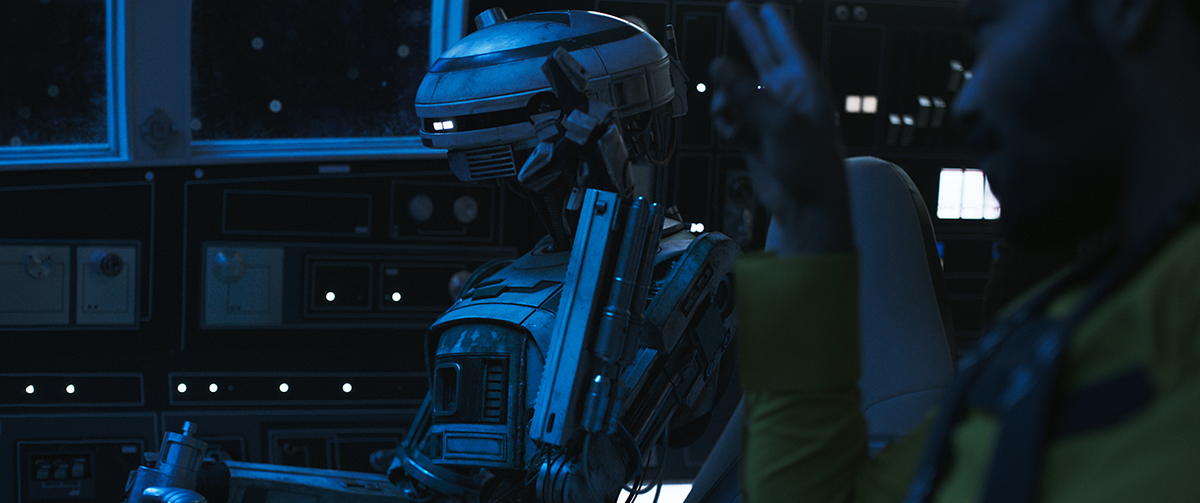OpenEXR, a widely-adopted HDR image file format, and OpenCue, a recently launched render manager, join the growing roster of Academy Software Foundation projects.
We’re thrilled to announce that the Academy Software Foundation (ASWF), a neutral forum for open source software development in the motion picture and media industries, today announced that OpenEXR and OpenCue have been accepted by the Technical Advisory Committee (TAC) as Academy Software Foundation projects alongside OpenVDB and OpenColorIO.
Initially developed by ILM, OpenEXR is an Academy Scientific and Technical Award winning high dynamic-range (HDR) image file format for use in computer imaging applications. It is a widely-adopted standard in computer graphics for linear and interactive media.
OpenCue is a fully featured, open source render manager for media and entertainment that can be used to break down complex jobs into individual tasks. Developed in collaboration by Google Cloud and Sony Pictures Imageworks, OpenCue is an evolution of Sony’s internal queuing system, Cue 3.
“This announcement marks a new phase for the Academy Software Foundation. We’ve achieved our initial goal of accepting OpenVDB, OpenColorIO, and OpenEXR – projects which greatly influenced the Foundation’s formation – and we are now ready to support and drive collaboration around newer projects like OpenCue,” David Morin, Executive Director of Academy Software Foundation. “Studios and developers are finding value in having a neutral home for the open source projects that our industry relies on, and we look forward to growing our projects and continuing to find new ways to support to the broader open source community.”

OpenEXR and OpenCue join OpenVDB and OpenColorIO as projects in the incubation stage at the Academy Software Foundation. All newly accepted projects start in incubation while they work to meet the high standards of the Academy Software Foundation and later graduate to full adoption. This allows the Academy Software Foundation to consider and support projects at different levels of maturity and industry adoption, as long as they align with the Foundation’s mission to increase the quality and quantity of contributions to the content creation industry’s open source software base.
Cary Phillips, Lucasfilm Research & Development Supervisor and Academy Science and Technology Council member noted, “The Academy Software Foundation was created with OpenEXR in mind, recognizing that there’s a natural life cycle to software projects: original architects and developers move between companies, expertise spreads throughout the industry, and the entire VFX technology ecosystem rapidly evolves. The ASWF has brought together virtually every major company in the industry, and it provides a vital forum to discuss sensible, practical solutions that should ensure that OpenEXR continues to serve the industry as a stable and reliable standard.”
OpenEXR
One of the foundational technologies in computer imaging, OpenEXR is a standard HDR image file format for high-quality image processing and storage. It features higher dynamic range and color precision than existing 8- and 10-bit image file formats, and the latest version of OpenEXR supports multiple image compression algorithms, stereoscopic workflows, multi-part files and deep data.
“For us, the single most important thing we create are the images that we put on screen, and we’ve all come to trust the OpenEXR format with our most precious data. ILM’s decision over 15 years ago to make EXR available as an open source project for the filmmaking community arguably set in motion an industry-wide trend that fostered collaboration and shared advancement, eventually culminating in the creation of the Academy Software Foundation. We’re proud to contribute OpenEXR to a new home to ensure it remains a robust and stable project for years to come,” said Francois Chardavoine, Head of Production Technology, Industrial Light & Magic.

OpenEXR was developed in 1999 by ILM in response to the demand for higher color fidelity in the visual effects industry. It was released to the public as an open source library in 2003, and it has since been widely-used and maintained through code contributions from companies including Weta Digital, Walt Disney Animation Studios, Sony Pictures Imageworks, Pixar Animation Studios, Autodesk, and DreamWorks, among others. OpenEXR was honored with an Academy Scientific and Technical Award in 2007.
OpenEXR is ILM’s main image file format and has been used in all motion pictures that ILM contributes visual effects work to since 2000. The first movies to employ OpenEXR were Harry Potter and the Sorcerer’s Stone, Men in Black II, Gangs of New York, and Signs. Recent films include Solo: A Star Wars Story, Avengers: Infinity War, Black Panther, and Star Wars: The Last Jedi.
Developers interested in learning more or contributing to OpenEXR can visit the OpenEXR Github page.